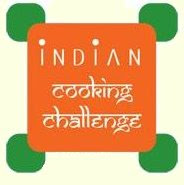Hope this journey across India has expanded your palates to accommodate the diversity in our food culture. Today, our last stop in this series is West Bengal and I end this series on a sweet note.
Special thanks to Srivalli for initiating this series and to all fellow marathoners who made this a very enjoyable journey. Hope all of you will continue this journey in any small way possible in your respective kitchens.
A few words about West Bengal before the recipe.
*West Bengal has been in the center of our history. It was a home state for many stalwarts of India like Rabindranath Tagore, Subhash Chandra Bose, Raja Ram Mohan Roy etc. *Bengali literature is very rich and has a long tradition in folk literature.
*Rice and Fish form a major part of their cuisine.
Please join me for a lovely, mouth watering dessert from this state..
Ingredients -
Home made paneer 3/4 cup (Needs to be fresh)
Milk 4 cups
Sugar 3/4 cup (or more as per preference)
Saffron a pinch soaked in a tablespoon of milk
Cardamom Powder 1/2 tsp
Mixed nuts (I used pistachios, cashews and almonds)
Optional ingredients -
*Condensed milk can be used to make it richer and thicker and also to reduce the cooking time.
*Corn Flour / Rice Flour can be used as a thickening agent.
Method Of Preparation -
Knead the fresh paneer well and make small roundels of them and set aside.
Boil milk under a reduced flame until it is reduced to 1/2 or 3/4 of its quantity. Add sugar and the saffron. Take care to make sure the milk doesn't get burnt. So continuous stirring is a good idea.
Gently drop the prepared paneer balls into the simmering milk. Let it simmer for a few more minutes.
Remove and refrigerate upon cooling. Serve chilled for a delightful dessert!
Preparation Time 40 min
Makes 4-cups








